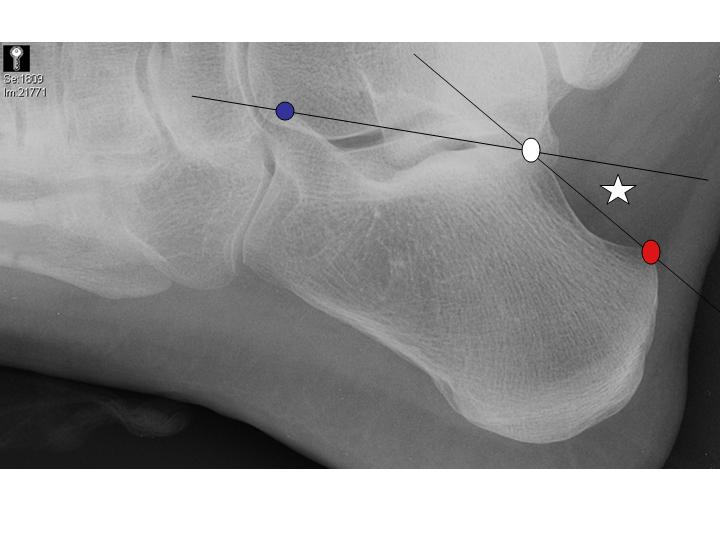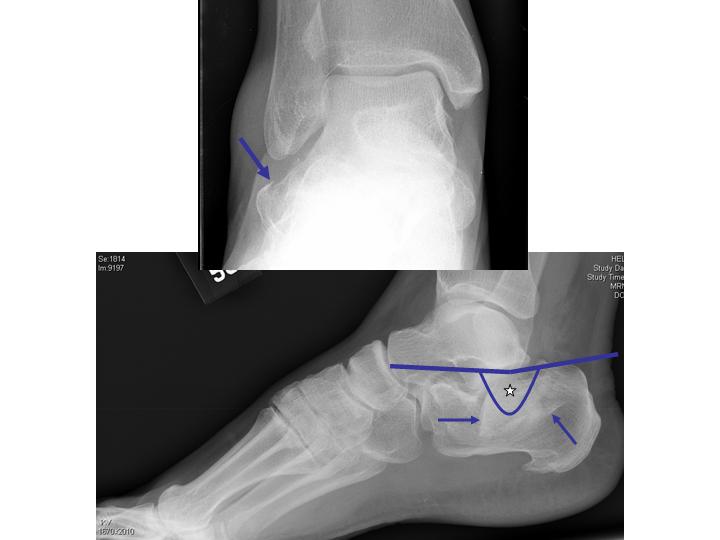Foot Case 4 Diagnosis
Calcaneus fracture with loss of Bohler's angle

Diagnosis can be subtle on plain radiographs of the foot, so if suspicious, order AP, lateral, oblique, and axial (calcaneal) views.
The only sign on radiographs may be linear areas of sclerosis across trabecular lines (as indicated by the arrows on the lateral radiograph) or an abnormal Bohler's angle on the lateral projection. The middle radiograph is abnormal. This angle is formed by intersecting two lines (white star - see detailed description under "Additional Images"). Normal can range from 20°- 40°, so a comparison view of the unaffected side may be helpful. The angle may be less than 20° or even become negative in the setting of an impacted fracture, even if fracture lines are not otherwise radiographically obvious.
A significant minority of these patients have lumbar compression fractures or bilateral calcaneus fractures so additional imaging should be strongly considered, even if the patient is asymptomatic.
CT has revolutionized the diagnosis, treatment, and ability to render accurate prognoses of fractures of the calcaneus. The extent and comminution of the fracture usually appears much worse on CT.
